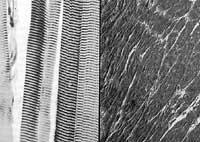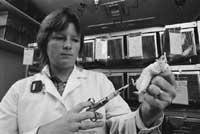Self-cleaning arteries
1999/04/18 Kortabarria Olabarria, Beñardo - Elhuyar Zientzia
After obtaining genetically modified blood vessels, a team of researchers at Stanford University has taken a big step forward in preventing bleeding. Bleeding that appears in the heart or legs, as well as arteriosclerosis or platelet accumulation, can endanger the health of patients. To address these problems, scientists at the aforementioned university are working on the creation of blood vessels capable of cleansing them by themselves. To do this, they have used a new technique, transplanting the genes that will release the clot.
So far, researchers have used the gene called TPA, which has been used in human tissue rabbits that had bleeding in the legs, obtaining good results. At present, the drug based on this gene is already used when an infarction has occurred and an urgent treatment is necessary in the embolism.
The technique has its own process. First, researchers create an adenovirus that has lost the ability to reproduce. This virus is known, which causes a hoarseness. The cloned TPA gene of human tissues is introduced into the virus in a saline solution. This solution is inserted into the vein and after 15 minutes it is removed. Finally, operatively, they remove the vein and attach it to a completely closed artery. Six days later, the closure of the fully closed artery had fallen to 7%. In fact, the veins thus introduced become super producers of the TPA gene. Since this gene is able to break clots and platelets, it can reduce the risk of heart attacks or embolism.
At the moment they have only shown it with rabbits.
Published in 7

Gai honi buruzko eduki gehiago
Elhuyarrek garatutako teknologia






